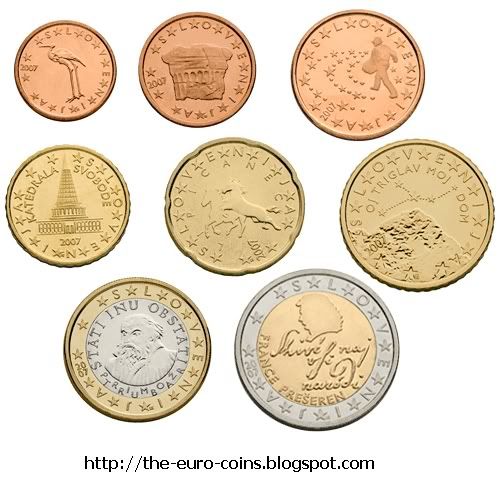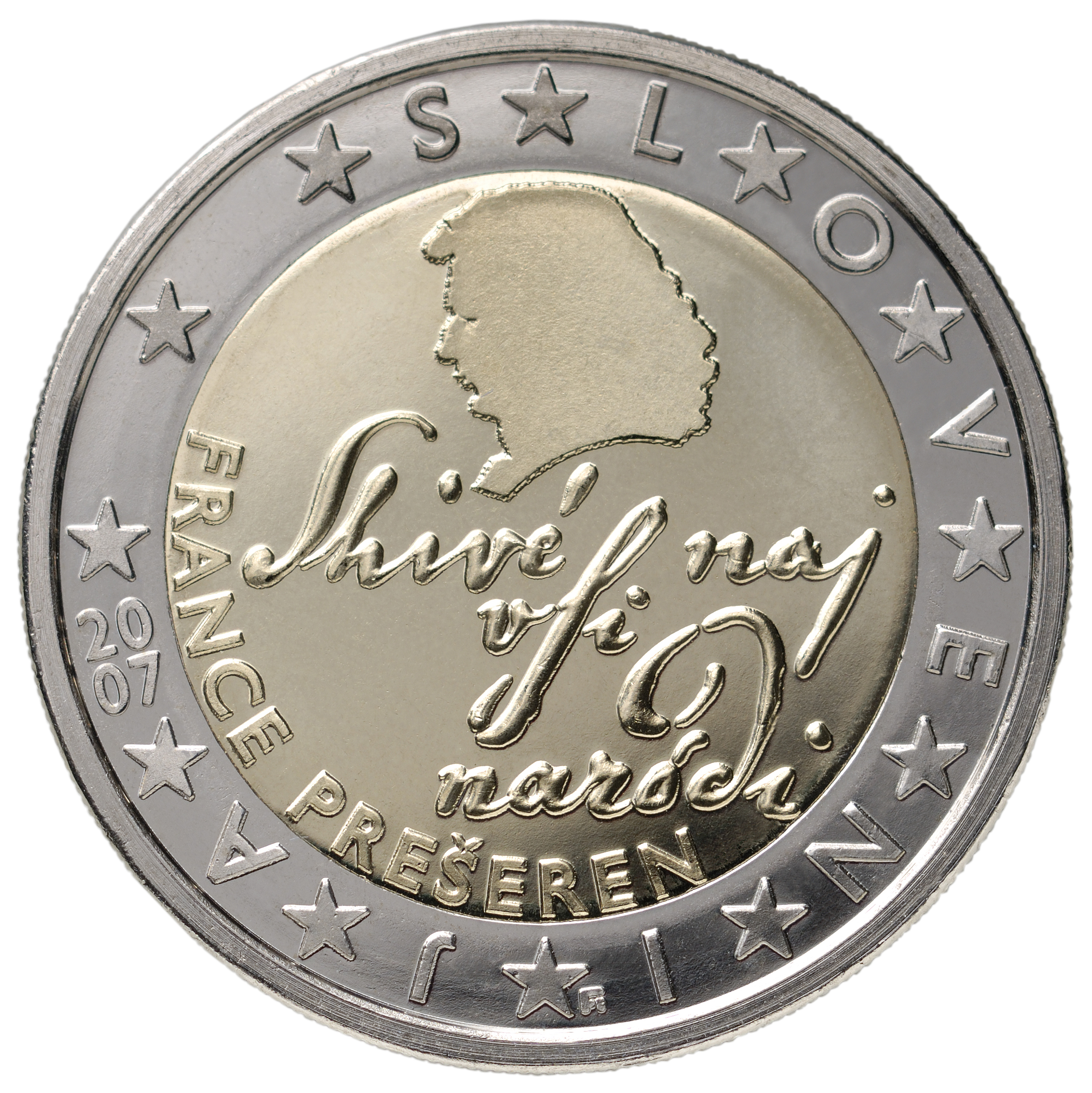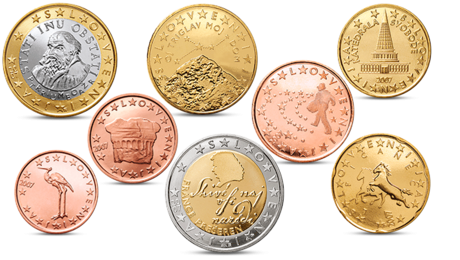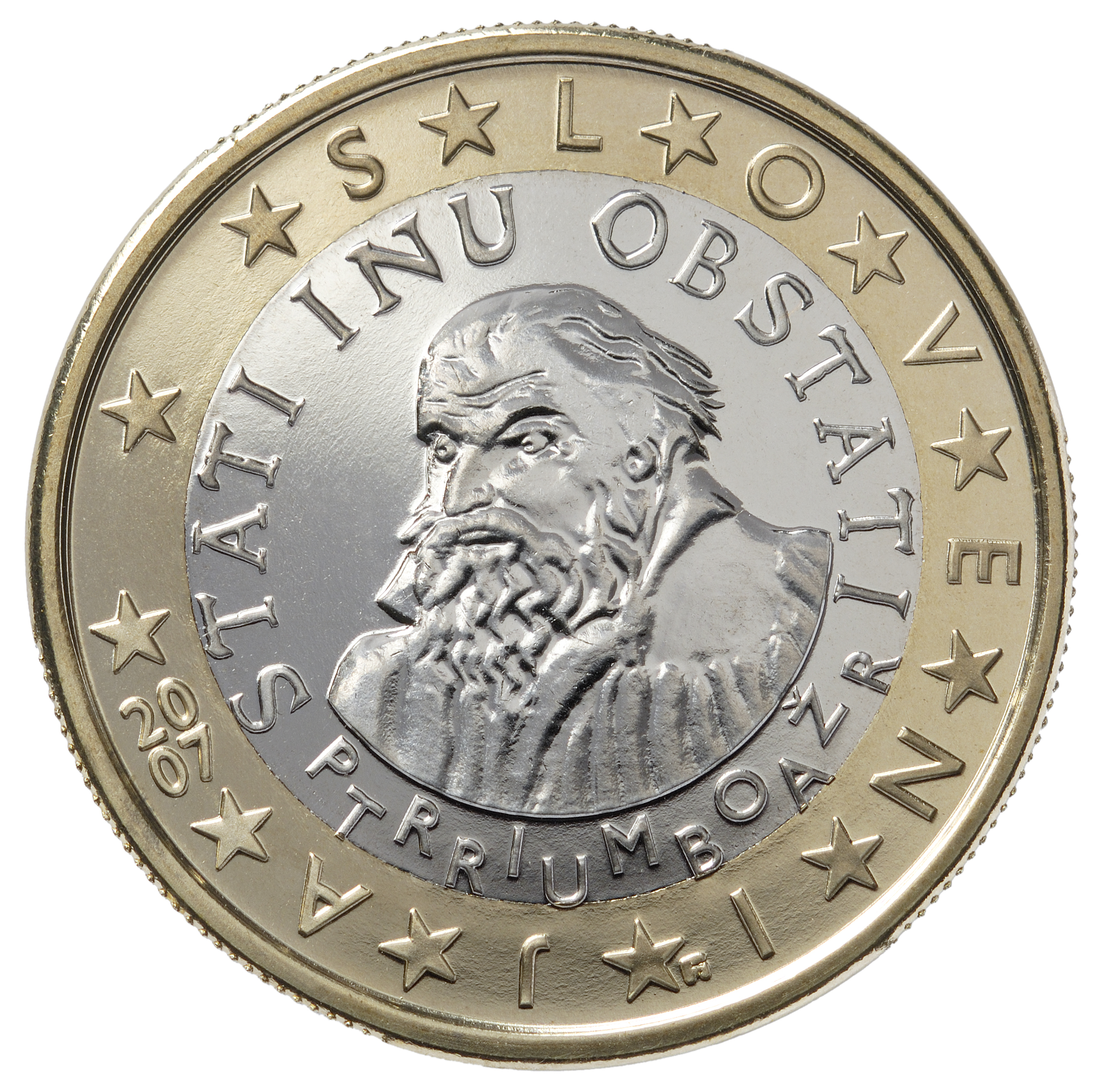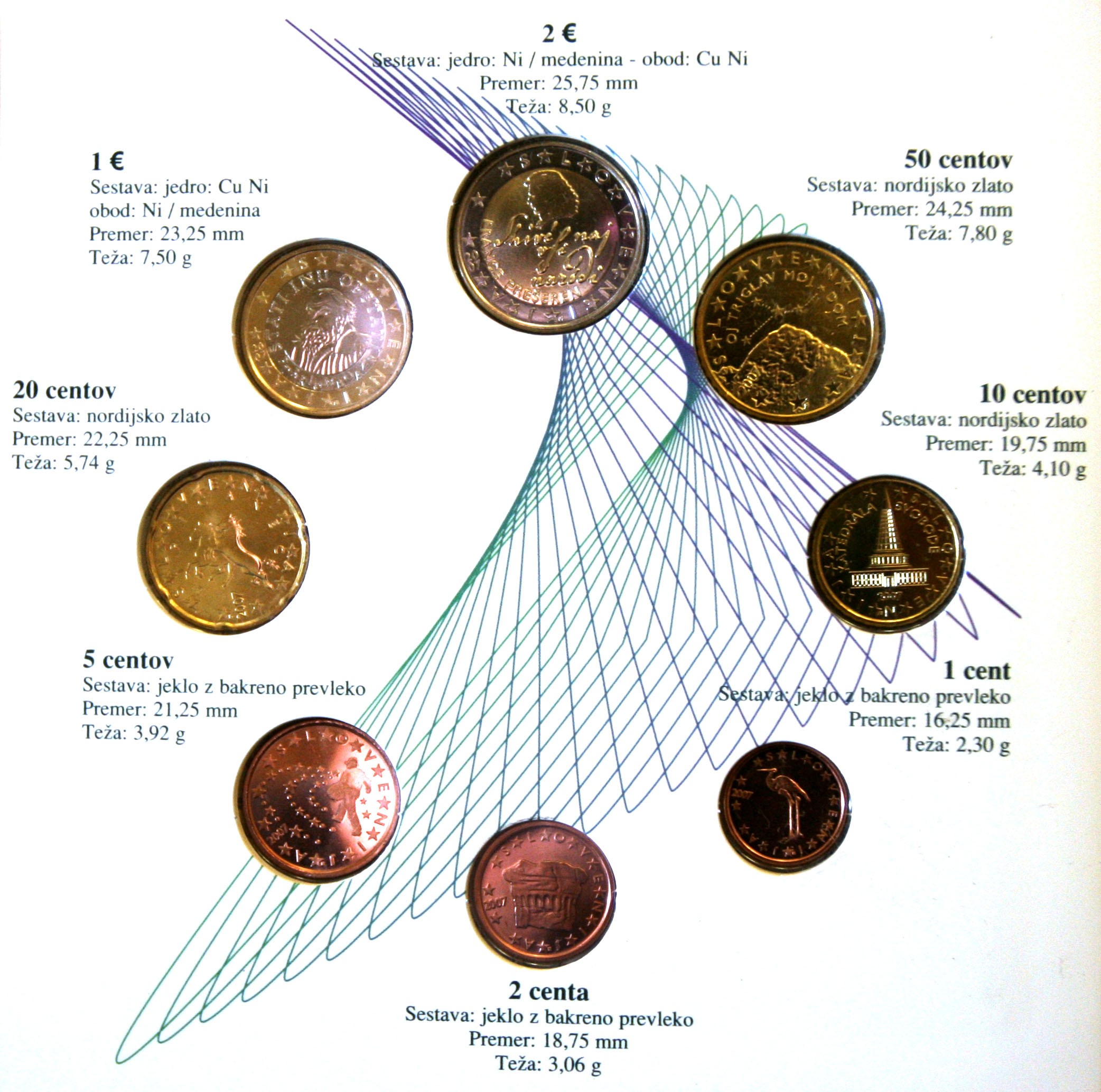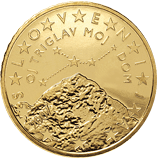Slovenian euro coins
The Slovenian euro coins are put into circulation in Slovenia Euro coins of the European currency Euro.
Circulation coins
The design of the national side of the Slovenian Euro coins was introduced to the public on October 7, 2005. Slovenia on 1 January 2007 replaced its old currency Tolar by the euro. In June 2006, an exchange rate of 239,640 Tolar was set for a Euro by the Finance Ministers of the European Union. The country has therefore the right to mint euro coins about 230 million, representing a value of approximately 80 million euros.
The designed by Miljenko and Maja Licul and Janez Boljka coins are on the edge with the twelve stars broken lettering SLOVENIA (Slovenia ) circumscribed. The coins show the following motives:
Controversy / features
The figure of the Prince Steins on the 2 cent coin caused irritation in some Carinthian politicians, because their view of the Prince's Stone is not a historical element of the Republic of Slovenia and therefore they feared a collection of a Carinthian provincial symbol. The then Governor of Carinthia Joerg Haider criticized the massive project. Following the announcement of the Slovenian Government, the Fürstenstein mapped onto the 2- cent coins, he had this demonstratively remove from the Carinthian Provincial Museum and place in the foyer of the Carinthian Government. In Haider's initiative of the Prince's Stone is depicted as a symbol of the state government since 2007 on all official documents and the letterhead of the province of Carinthia.
Occasionally, the presentation of Lipizzaner horses on the 20 cent coin was mentioned in the media in connection with the figure of the prince stone. Austria looks at the Lipizzaner horses that were depicted on the former Austrian 5 - shilling coin as a national symbol. But official protests against it are not known, especially since the Lipizzan originated by the Slovenian Lipica.
The 1-cent piece, which is generally considered a good luck charm is because of the stork motif increasingly as a gift to the pregnancy or birth of a child likes, so that the Slovenian one - cent coin is above average spread in the rest of the euro area.
Currency conversion and introduction of the euro in Slovenia
Since 1 March 2006, the pricing in Slovenia took place both in Tolar and in euros. The euro cash changeover involved the exchange of 442 million coins and 108 million banknotes denominated in Tolar, in 155 million euro coins and 42 million euro bank notes. The contract for the coinage of the Slovenian euro coins received the Finnish State coin Rahapaja. As of early September 2006 banks and wholesalers were cared for by the Banka Slovenije with euro cash.
Mints
Because there is no mint in Slovenia, the coins in the 2007 class at the Suomen Rahapaja were marked with Fi than mint mark. In 2008, the coins were manufactured by the Royal Dutch Mint with the appropriate mintmark and Münzmeisterzeichen. From 2009 to 2011, the Finnish mint was again responsible for the preparation of the Slovenian euro coins, as well as 2012 and 2013 the Mincovňa Kremnica, in each case without marking the mintmark.
2- euro commemorative coins
→ Main article: 2- euro commemorative coins
Slovenia has not issued until the following day 2 euro commemorative coins:
- 2007: 50 Years Treaty of Rome
- 2008: 500th anniversary of Trubar
- 2009: 10 years of Economic and Monetary Union
- 2010: 200 years of botanical garden in Ljubljana
- 2011: 100th anniversary of national hero Franc Rozman - Stane
- 2012: 10th anniversary of the euro notes and coins
- 2013: 800th anniversary of the visits to the caves of Postojna
Trubar (2008)
Monetary Union ( 2009)
Botanical Garden of Ljubljana ( 2010)
Franc Rozman (2011)
Euro cash (2012 )
Postojna Cave (2013 )
Future issues
- 2014: commemorative of the 600th anniversary of the coronation Barbara of Celje to the German queen.
- 2015: 2000th anniversary of the founding of the Roman settlement Emona (instead of today's Ljubljana)
Collector coins
- 3 Euro: Material: Core: copper nickel (75% Cu, 25 % Ni); Ring: brass (78% Cu, 20 % Zn, 2% Ni) - Coin diameter: 32 mm - Weight: 15 g
- 30 euro: Material: 925 silver - coin diameter: 32 mm - Weight: 15 g
- 100 EUR Material: 900 Gold - Coin diameter: 24 mm - Weight: 7 g
Contain * only in the official coin set ** Included in the official coin set, as well as Coincard and loose in capsule


